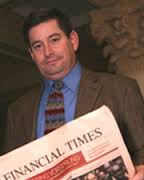Of the nearly 6,000 U.S. firms that conducted initial public offerings between 1980 and 2008, 38 percent became merger bidders within three years after the IPO and 12 percent became takeover targets. It is important that investors understand these developments, given how often post-IPO M&A activity occurs and how much it can affect the value of companies.
Take for instance First Solar and Paypal. First Solar, the second largest maker of solar panels worldwide, explicitly disclosed that a primary use of its 2006 IPO proceeds would be to engage in acquisitions to achieve vertical integration. Not surprisingly, First Solar acquired Turner Renewable Energy less than one year after going public. In contrast, eBay approached online payments servicer PayPal as an acquisition target well before the latter’s 2002 IPO, and eBay acquired PayPal shortly after its IPO. Investors probably had little trouble discerning the nature of likely future M&A activity for First Solar and PayPal after they went public, but what about other newly public firms – many that give more ambiguous signals of possible post-IPO M&A activity? Do readily observable aspects of the IPO process suggest which firms may soon become bidders or targets? Furthermore, do changes in the stock-price after M&A announcements for newly public firms suggest that investors use such information in pricing equity securities? These are the questions we address in our new study.
Using a comprehensive sample of U.S. IPOs from 1980 to 2008, consisting of 5,927 IPOs meeting criteria that are common in the empirical IPO literature, we propose and test the M&A anticipation hypothesis. According to this hypothesis, readily observable IPO deal structures and outcomes, such as pricing, proceeds, ownership structure and the like, are conducive to, and therefore predictive of, a firm eventually bidding to acquire another firm, becoming a merger target, or not becoming involved in any M&A activity. We test the anticipation hypothesis in three steps.
First, we investigate whether investors can use the observable aspects of IPO deal structure to make inferences about the likelihood and nature of future M&A activity, arguing that some factors may facilitate or impede becoming involved in M&A. Our main empirical results support the M&A anticipation hypothesis. Aspects of the going-public process predict the likelihood, timing, and valuation consequences of post-IPO M&A activity. In particular, we find that deal structure variables such as pricing, structure of proceeds, post-IPO ownership structure, and underwriting and promotional efforts help predict whether a newly public firm becomes an acquisition bidder versus an acquisition target within three years of its IPO. The predictive ability of these variables remains significant when we control for other variables indicative of M&A activity, such as firm-specific financial structure and performance, industry classification, year of the IPO, general equity market conditions, and degree of activity in M&A markets. We also test the power of our prediction models using a Receiver Operating Characteristic (ROC) curve analysis, which indicates that our baseline model can predict with 71.3 percent accuracy which IPO firms will engage in acquisitions, and with 70 percent accuracy which will sell themselves, within three years of an IPO. These findings suggest that inherent characteristics observed when a firm first goes public provide valuable signals about its later M&A decisions.
We also find evidence complementary to the M&A anticipation hypothesis when we examine market-timing aspects of the going-public process. Specifically, prior literature shows that firms may respond to hot equity markets or merger waves in timing equity issuance. Our results suggest that firms with deal structures conducive to becoming merger bidders appear more likely to time their IPOs opportunistically in response to industry-specific M&A waves and to engage in takeovers relatively quickly after their IPOs. In contrast, firms with deal structures typical of takeover targets do not appear to time their IPOs in response to hot markets or merger waves, and acquisitions of such firms occur with a greater time lag relative to the IPO.
Second, prior literature indicates that sophisticated institutional investors use public information to determine whether newly public firms will engage in M&A and to take stakes in those firms. We try to confirm those findings and also investigate whether such investors depend in part on the information that we conclude can predict post-IPO M&A activity. We confirm that institutional investors rely on publicly available information to take stakes in newly public M&A participants, but the non-public or public information that our analysis omits has little power to predict post-IPO M&A activity.
To shed more light on institutional investment in IPO firms, we match eventual bidder firms to non-bidder firms based on a wide array of characteristics, excluding IPO deal characteristics. We find that transient institutional investors hold larger ownership stakes – and larger stakes than so-called dedicated institutional investors — in eventual bidders compared with non-bidders. Overall, these results indicate that some sophisticated institutional investors exploit publicly available information available at the time of a firm’s IPO to anticipate post-IPO mergers.
Third, we investigate whether investors incorporate the likelihood of post-IPO mergers and acquisitions into valuation when the deals materialize. If investors use these observable aspects of IPO deal structure to predict future M&A activity, then investors should to some degree anticipate M&A activity by a newly public firm, much as they foresee acquisitions by firms that are frequent acquirers, that announce acquisition programs, or that are in an industry experiencing a merger wave. The empirical implication of investor anticipation is that newly public firms with IPO deal structures predictive of M&A activity should experience attenuated stock returns when mergers are eventually announced. We find that the predictability of post-IPO merger activity has implications for securities pricing upon and after merger announcements. Specifically, we find that excess stock returns upon merger announcement are indistinguishable from zero among newly public firms with IPO deal structures predictive of bidding activity, in contrast to positive returns to unlikely or surprise bidders. These results suggest that value-enhancing bidding activity is already capitalized into equity prices among likely bidders, consistent with the investor anticipation hypothesis. These results are inconsistent with the notion that unlikely or ill-prepared newly public bidders make overvalued bids or otherwise fail to create value through M&A activity.
However, among unlikely bidders, we find evidence of market overreaction to merger announcements, suggesting that investors imperfectly process the somewhat surprising news of a merger bid by an unlikely bidder. Based on short-window abnormal returns, we observe that investors react strongly to acquisition announcements made by unlikely bidders, which is consistent with investors being overly optimistic. The statistically significant short-term returns are followed by a reversal in long-term post-acquisition returns at unlikely bidders — but not at likely bidders. An apparent overreaction pattern, characterized by an abrupt positive return in the short-run followed by a reversal in long-term returns, at only unlikely bidders provides additional support for our anticipation hypothesis and brings new insights to the literature.
This post comes to us from professors Christopher W. Anderson at the University of Kansas, Jian Huang at Towson University, and Gökhan Torna at the State University of New York at Stony Brook. It is based on their recent paper, “Can Investors Anticipate Post-IPO Mergers and Acquisitions?”, available here.
 Sky Blog
Sky Blog


